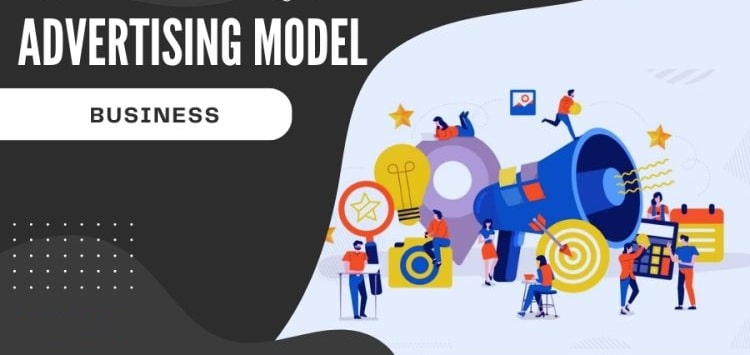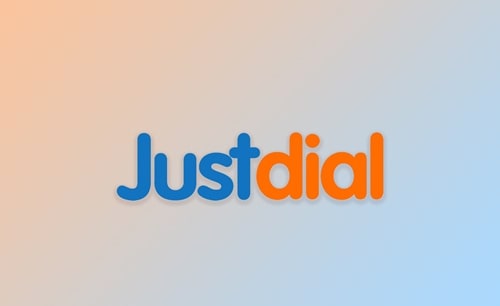To achieve success in the highly competitive world, every business strategy, offer, discount, and marketing is used to enhance brand exposure. From promoting offline to social media platforms, the advertisement business is unbeatable, with increasing demand.
This is a highly successful and most appealing business model with growing revenue. Many big brands like Meta, Google, YouTube, and traditional media have made a fortune in this business. This business model simply works by offering free media or affordable content while showing advertisements on the platform.
The advertisement on the platform helps in generating revenue, whereas users can sometimes click on the advertisement if they want to buy something. As a customer clicks and purchases the product, extra revenue is generated for the platform in the advertising business model. To understand better, let’s take a close look at the definition, examples, and other aspects.
What is the Advertising Business Model?

The advertising business model is a revenue model in which companies earn money by displaying ads to their users. These companies have the option to directly charge the audience to use the services; however, most of them offer a free-to-use platform with advertisements. As the users start getting fond of the platform, they can buy a subscription to remove ads.
In other words, these platforms earn from businesses to show ads, and then charge customers to remove ads. So, the advertisement business model has a win-win situation on both sides. Newspaper platforms are the best example where users can visit and read news without paying a single buck. The newspaper agency shows ads on its website or app, which help it earn.
Over time, the advertising business model has evolved into multiple formats. Some of the most common ones include:
- Display Advertising
- Native Advertising
- Search Advertising
- Video Advertising
- Social Media Advertising
These are the common types with which you are interacting daily. However, the marketing strategy keeps evolving in this industry.
Examples of the Advertising Business Model
The advertisement business model is used by many big companies as they know their services are top-notch. Here are some examples:
1. Google
Google is the biggest player in the advertising business in the world with a massive database of users, brands, and more. Google has many advertising businesses, like its search engine, YouTube, and more. Google earns billions through its Google Ads, where advertisers connect with users searching for relevant keywords. Without a doubt, Google still dominates the online advertising market.
2. Meta (Facebook, Instagram)
Meta offers a free-to-use platform like Facebook and Instagram. Both social media platforms have billions of active users who browse the platforms. Companies can start an ad campaign and pay Meta with targeted marketing to users’ demographics, interests, and behaviours.
3. Traditional Media
Traditional Media like TV Channels, radio, and newspapers have been using the advertisement model for decades. These platforms provide entertainment to users through their content, while the advertisements on the platform help in generating revenue.
4. Mobile Apps and Games
Most smartphone apps and games offer a free-to-use platform with mini-advertisement banners. These apps allow users to enjoy the content, but require a premium plan or watching ads. These ads are usually annoying in games, which makes the user consider upgrading to a subscription, resulting in a big revenue.
Advantages of the Advertising Business Model
There are many key benefits that an advertising business model offers compared to any other business strategy. Below are some top benefits:
1. Massive Revenue Potential
Advertisement models generate significant revenue with a large audience, and if done right, such businesses usually grow with time, eventually making more revenue. The only fundamental thing to do right is to generate an audience. Companies like Meta and Google have a large audience with a huge database of preferences for what they like and dislike. So, making a multi-billion-dollar business becomes easier for such companies.
2. Free or Affordable Services for Consumers
Customers also get many benefits with an advertising business model because users can access the platform without paying anything. Customers have to watch some ads in between on the platforms. Platforms like Facebook, YouTube, and many free apps become accessible to everyone because they rely on an advertising model. On the other hand, if a customer wants to remove ads, there are subscription plans available.
3. Scalability
The Advertisement model is a scalable business; as the number of users grows, the business also grows, ensuring a win-win strategy with the large audience. The higher revenue also increases the costs of ads and helps the brand make more without spending too much on infrastructure. The initial cost of running this business may be high, but it keeps going down when the business starts growing.
4. Attractive for Advertisers
Most advertisers want to advertise on platforms that have an option for targeted ads, a large audience, and cheaper prices. Digital platforms, in particular, provide advanced targeting tools, allowing advertisers to show their ads to people most likely to be interested in their products.
Disadvantages of the Advertising Business Model
The advertisement model offers great potential for growth and revenue, but there is a hidden side that many forget to notice while entering into this business. Below are some major disadvantages:
1. Dependence on a Large Audience
The platform is completely dependent upon a large audience. In this competitive market, retaining audience is not the only thing to focus on, but companies have to focus on making people use the platform more often. Google, Facebook, and similar brands spend billions to make their audience use their platform.
2. User Experience Issues
Users may like the platform due to its lack of charges, but it becomes annoying to watch ads after every couple of seconds. Whether it is Instagram, Facebook, or YouTube, most people feel annoyed with the ads. This can result in poor user experience, and the loyal audience may avoid using the platform altogether.
3. Ad Blockers
The advertisement business model works on ads, and the revenue is generated from showing ads to users. Many users start installing ad blockers to avoid paying for a subscription, which hurts the business and reduces growth. Companies have to spend billions to stop these ad blockers.
Conclusion
The advertising business model has been a foundation for media, entertainment, and digital platforms for decades. It allows companies to offer free or low-cost services to users while earning revenue from advertisers. Giants like Google, Facebook, and YouTube have proven the effectiveness of this model on a global scale.



